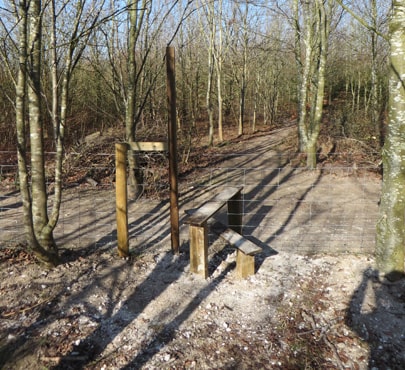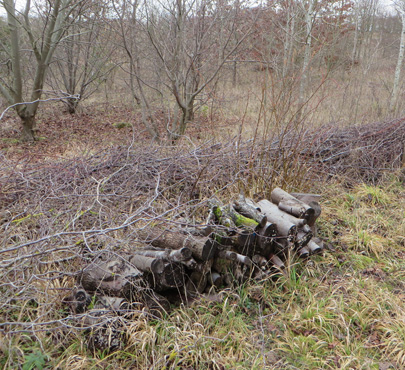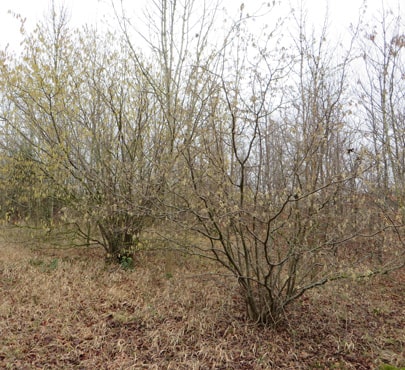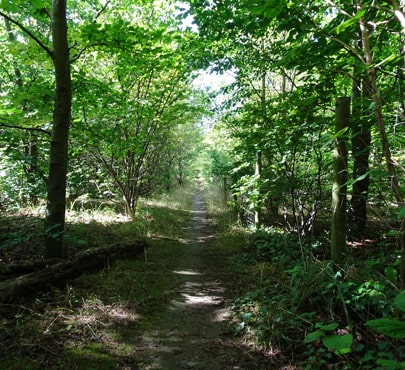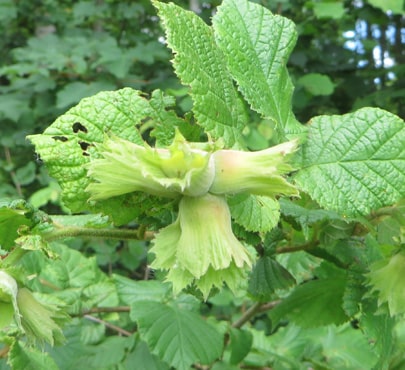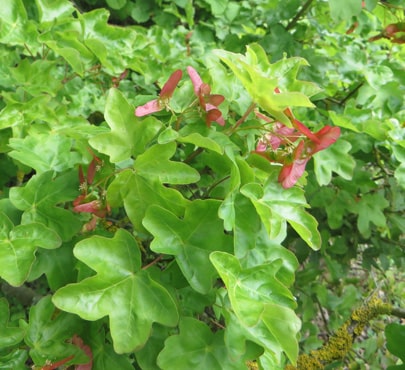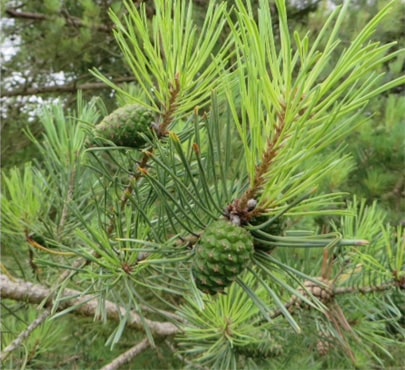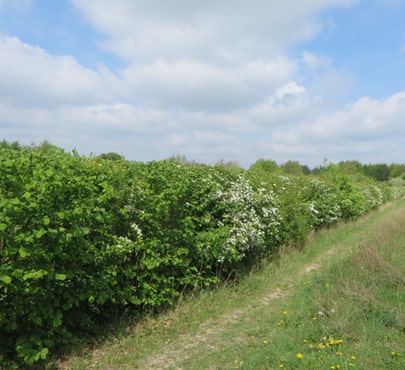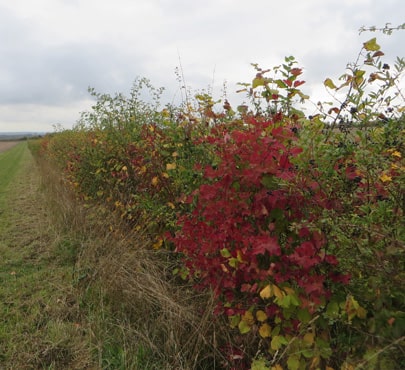Woodland
Woodland walk: Make the most of your visit to the Down by following the Woodland Trail! Details can be found here where you’ll find useful information about the trees and shrubs you’ll pass along the way. And you can access detailed information on each of the trees by clicking the relevant link:
Woods surround the meadows and grassland of Magog Down. But it was not always so. There have been trees on Little Trees Hill for a hundred years and more with a belt leading to the hilltop across the skyline. It consisted of Ash, Holm Oak, Horse Chestnut, Lime, Larch, Norway Maple, Scots Pine and Sycamore.
What you see today is the result of the planting of 20,000 trees and shrubs as ‘whips’ (30 – 90 cm tall), mainly by volunteers, in five new woods, started in March 1991 and completed nine months later. The planting was largely the scheme of Eric Winterflood MBE, a former forester at the Forestry Commission and one of the first Trustees.
Now you can walk through these woods which give shade in summer and beneath the canopies, a habitat quite different to that of the grassland.
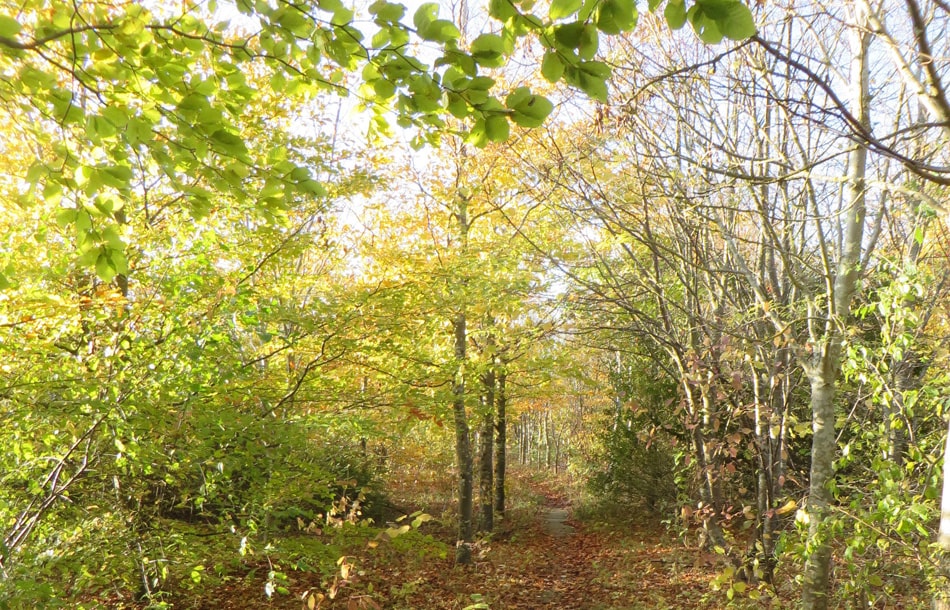
Youth Wood in early Autumn
Trees and Shrubs planted on the Down
The native trees planted in the woods were: Beech, Ash (subsequently nearly all killed by Ash Dieback), Small-Leaved Lime, Wild Cherry, Field Maple, Holly and Yew. On the deeper soils over chalk, Oak was planted in place of Beech. Donated trees included Whitebeam, Silver Birch and the Wild Service Tree.
Where Ash Dieback has occurred, the trees have been left in place, providing dead wood for certain invertebrates, favoured by birds such as woodpeckers. The resulting glades are important open, sunny habitats where grasses and flowers can flourish, and they support invertebrates and birds associated with the woodland. Butterflies such as the Speckled Wood fly in the partially shaded woodland, often perching in sunny spots. The caterpillars feed on grasses in the glades.
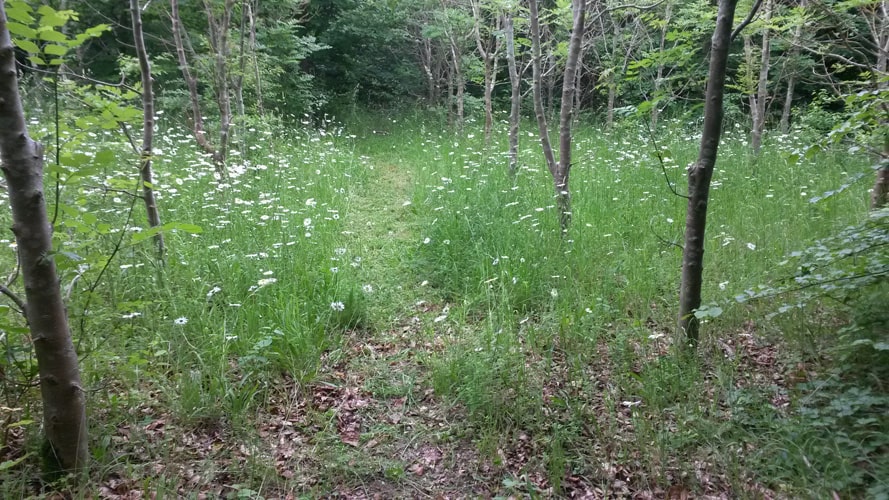
Young ash trees affected by Ash Dieback in Villedômer Wood
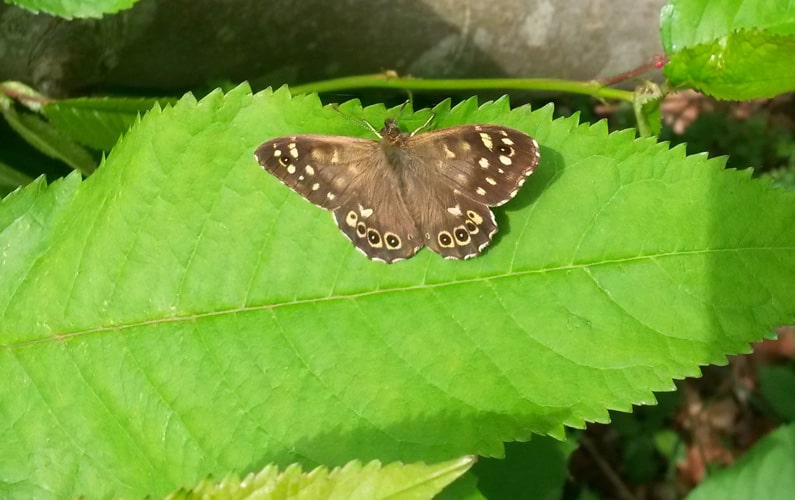
Speckled Wood butterfly in Villedômer Wood
The woodland edges were planted with a mixture of: Blackthorn, Dogwood, Dog Rose, Hawthorn, Hazel, Purging Buckthorn and Spindle.
Trees were close planted so that in time they could be thinned and sold for pit props. They achieved a very high survival rate. The pit prop market collapsed and the tall, thin trees with a dense canopy inhibited growth of the shrub layer so important for nesting birds. This produced a plantation-type habitat, ‘bereft’ of wildlife and lacking the variety that makes woodlands an enjoyable walk. A thinning programme, started in 2012 to remove trees of poor long-term potential (i.e. those with twisted trunks, existing wounds, or poor growth), creates space for well-growing trees to thrive, and enhances natural glades that have developed as this benefits birds, insects and small mammals.
A coppicing programme on species such as Hazel was started to create and diversify the shrub layer. Stacks of felled timber are left to improve the wildlife habitat.
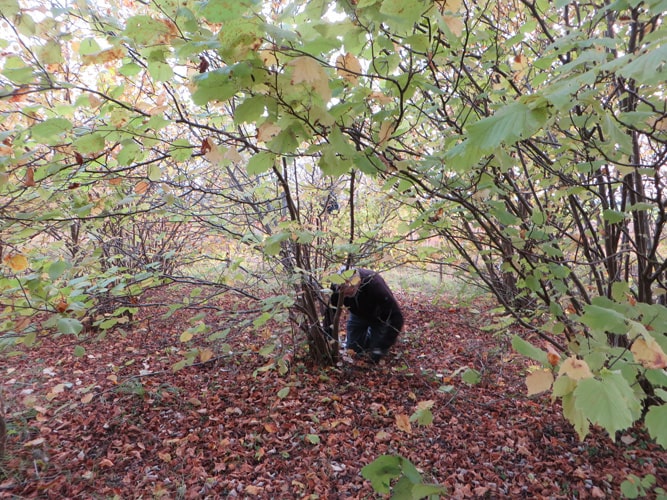
The names of the woods reflect some of the history of the Magog Trust, the support given to it and the Trust’s links with the local community:
Colin’s Wood – Colin Davison, Vicar of Stapleford until his untimely death in 1989, was a key mover in starting the project.
Vestey Wood – to mark the interest-free loan from Edmund Vestey which contributed substantially to the purchase of the land.
Memorial Wood – for those who donated trees for loved ones.
Youth Wood – planted mainly by local schools and youth groups.
Magog Wood – the original skyline wood broadened and extended. The wood extends to the boundary of the Neolithic Causewayed Enclosure on Little Trees Hill. The break in the skyline wood enables wonderful views across North and South Down. For more detailed information on the Archaeology of Magog Down, click here.
Villedômer Wood – named after the French village in the Loire Valley that is twinned with Stapleford. There’s a pathway running through this area of woodland that members of the Stapleford Twinning Society refer to as the Champs-Élysées!
The woodlands are maintained by the Trust, initially with funding, through central and local grants; the Farm Woodland Scheme, the Countryside Commission, Cambridgeshire County Council and from sponsorship of trees by members of the public.
Over time, more groups of trees have been planted on Magog Down. The 40th Anniversary of the Queen’s reign was marked with trees planted by St Faith’s School by the Car Park. Green Hedges School also planted shrubs there.
In 2014, a small copse was planted in the sheep paddocks to provide shade, with 2 Wild Cherries, 2 Whitebeams, 2 Crab Apples and 2 Mountain Ash, named Barnes’ Copse to mark the contribution by Ray and Joan Barnes, both involved in founding the Trust. Joan became Chairman and later, Vice-President.
In September of the same year, on the Silver Anniversary of The Trust, an appeal was launched to purchase and plant ‘Singing Trees’. These are tall standard trees with the crown, even of young trees, well above the top of the hedge which provides perches for bird species such as yellowhammer and corn bunting. 25 trees were planted that December.
For the Queen’s Platinum Jubilee, a copse consisting of Small-Leaved Lime, Wild Service Tree and Whitebeam whips will be planted in the autumn of 2022 (enclosed by a strong deer-proof fence) within the Sheep Paddocks on the South Down. A small group of trees has also been planted in Fairfield during 2022 which, in time, will provide a shady area where people can sit.
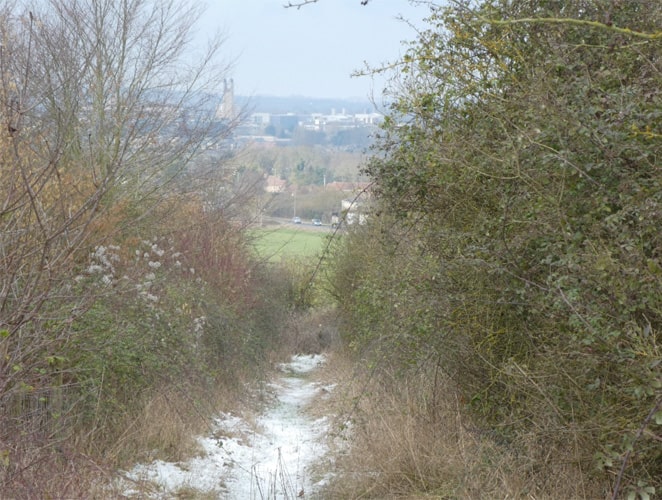
The Hedges
The Perimeter Path is bounded by hedges that in part preceded the purchase of Magog Down. They have been maintained and improved by a combination of cutting, coppicing and replanting with a selection of shrubs – not including the highly invasive Blackthorn!
Two new hedges have been planted, one on the border of Fairfield and North Down and the other on the border between the arable land and the sheep paddocks on South Down.
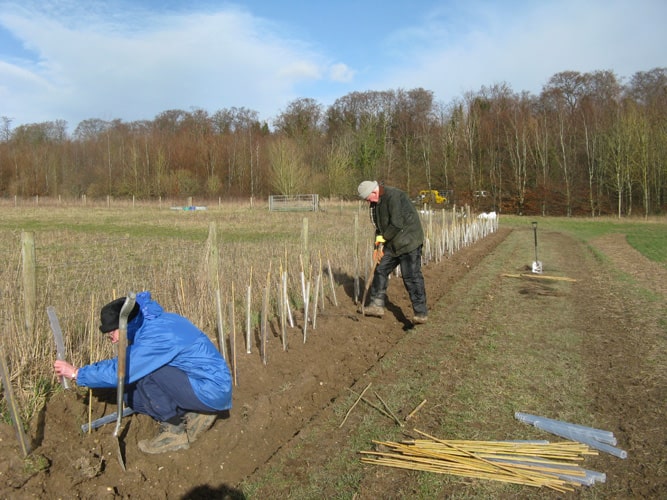
All these hedges are important habitats for wildlife, providing sites for nesting birds, blossom for insects in spring and summer, and berries for hungry birds during autumn and winter.
You can find more information on birds, insects and flowers seen at Magog Down in the Nature section of the website.

